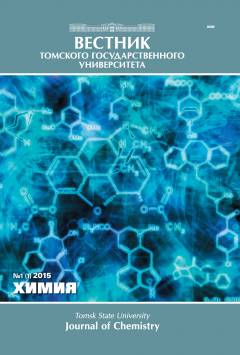Some features of the isolation of glyoxalic acid from glyoxal oxidation products
Glyoxylic acid (GA), being a monobasic oxoacid, like some of its salts finds wide application in the organic synthesis of a number of important compounds. In the 19th and 20th centuries, several methods of synthesizing GA have been developed, but all of them include very burdensome stages of separating GA from the process mixtures. Oxalic acid (OA) is the main by-product in the process of glyoxal (GO) oxidation. Strong mineral acids and OA show corrosive activity, and their removal is a complex and costly process. Multiple experiments have shown that an efficient and economical way of isolating and separating GA and OA is precipitation as a mixture of slightly soluble calcium salts. At the same time, it is difficult to precisely control the pH in parallel, because it takes considerable time to reach the states of equilibrium of numerous exchange reactions with CaCO3 in the complex mixtures consisting of HNO3, HCl, GA, and OA. Excess of CaCO3 can lead to loss of the target GA, and its lack to both GA loss and to formation of acidic calcium oxalate. Thus, an experimental estimate of the optimum amount of CaCO3 is a necessary preliminary step in the method of GA isolation from complex process mixtures, one which is undoubtedly of great interest for scaling the method. It is known that acidic calcium oxalate is formed when OA is isolated by CaCO3 from the solution at pH = 0-2.5. The subsequent increase in CaCO3 is accompanied by a simultaneous increase in pH. It results in formation of slightly soluble calcium glyoxylate (CaGA) with simultaneous conversion of acidic calcium oxalate to insoluble calcium oxalate (CaOA). Determination of the optimum amount of CaCO3 for these purposes can be done by the usual acid-base titration of the mixture of GO oxidation products by a standard solution of NaOH. The amounts of NaOH spent for titrating aliquots of these mixtures corresponds to half the amount of CaCO3 at the point of maximum content of CaGA in the mixture. Potentiometric titration of both the model and the technological mixtures of the products of GO oxidation confirms this finding. Thus, in order to isolate GA fully it is sufficient to know the volume of the technological mixture obtained under quite definite conditions. The proposed method of isolation can be easily scaled up. It provides an opportunity to obtain important and inexpensive components for the synthesis of a number of medications at low cost.
Keywords
глиоксаль, глиоксалевая кислота, щавелевая кислота, осаждение, окисление, селективное выделение, glyoxal, glyoxylic acid, oxalic acid, precipitation, oxidation, selective separationAuthors
| Name | Organization | |
| Pozdniakov Maxim A. | Tomsk State University | mks123@yandex.ru |
| Salikov Alexey S. | Tomsk State University | kanvas15@gmail.com |
| Botvin Vladimir V. | Tomsk State University | botvinilo1991@gmail.com |
| Filimoshkin Anatoly G. | Tomsk State University | filag05@rambler.ru |
References

Some features of the isolation of glyoxalic acid from glyoxal oxidation products | Vestnik Tomskogo gosudarstvennogo universiteta. Chimia – Tomsk State University Journal of Chemistry. 2017. № 7. DOI: 10.17223/24135542/7/7
